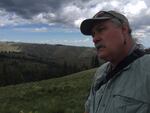
Botanist Mark Darrach has discovered three new plants on one hillside in the Blue Mountains.
Courtney Flatt, NWPR/EarthFix
On a hillside in southeastern Washington, bunch grasses ripple in the wind. A storm is forming off in the distance, and crickets chirp nearby.
It’s here where botanist Mark Darrach has found three rare flowers previously unknown to science. That’s a lot. He said many botanists are lucky to find one in their career.
“It’s a unique plant community that hasn’t been recognized until just a couple years ago when we stumbled across these and started scratching our heads, like ‘Where did this come from? We’ve never seen this before,” Darrach said.
In all, Darrach has helped identify 10 rare and unknown plants in the
. One is a small, pink, star-shaped flower that springs up along the hillside’s peak. Darrach calls it Yeti Phlox. It’s covered in a hair-like fuzz.
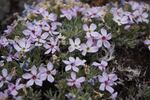
Mark Darrach has helped identify three previously unknown plants on this hillside. One is Yeti Phlox.
Mark Darrach
But just this season, Darrach has spotted a particularly nasty invasive grass gaining a foothold in the otherwise pristine grassland. The weed is called
. Darrach has another name for it.
“I call it holocaust grass because it’s an ecological holocaust potentially in the making, and that is a superman grass if you ask me,” Darrach said.
Or maybe a super villain grass. It uses a toxic fungus to poison other plants around it. That gives the weed a leg up to continue its takeover.
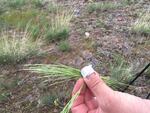
Mark Darrach holds up a piece of ventenata grass. He calls the weed "holocaust grass."
Courtney Flatt, NWPR/EarthFix
To many conservationists, the type of grassland on this hillside — canyon grassland — is extremely threatened already. Most grasslands worldwide are not very intact.
Take, for example, Washington's Palouse.
"The Palouse prairie was once covered with native bunch grasses. That area has been converted to agriculture a long time ago," said Brian Kelly, the restoration director for Hells Canyon Preservation Council.
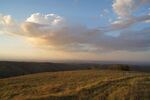
Canyon grasslands in the Northwest.
Mark Darrach
Kelly said the remaining native grasslands are dwindling, and they need to be preserved. Kelly says these grasslands form a mosaic with higher elevation forests.
“It creates some really unique habitat and gives a variety of different animals and birds opportunities to use both habitats,” Kelly said. The species that benefit from such habitat are diverse, he said, ranging from butterflies to mule deer and elk.
Kelly said these grasslands are threatened by invasive species, overgrazing, off-road vehicles, and climate change. But he said it isn't all doom and gloom for rare grassland plants. The council has been working to preserve a federally threatened plant called
. Kelly said it's found in 13 places, all in the Northwest canyon grassland.
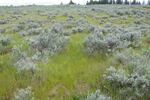
Ventenata grass takes over "scablands" on the south end of the Umatilla National Forest.
Mark Darrach
"We go down there every year and dig the weeds that are competing with the plant by hand so that there's no chance that herbicide might have a damaging effect on the threatened plants," Kelly said.
Darrach isn’t 100 percent sure how ventenata grass made it to the Blue Mountains. It’s common for invasive grasses to take root where cattle are allowed to trample the soil. But this is a remote area where cattle rarely roam. Darrach it’s possible the growing presence of elk that winter here are creating the same impact that’s often blamed on livestock.
He’s certain about one thing, though: He doesn’t like the sight of this invasive grass.
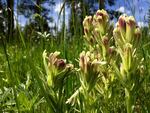
A rare species of paintbrush found by Mark Darrach.
Courtney Flatt, NWPR/EarthFix
"All that real pale, green color is all ventenata grass. Ugh. Enough to make a person want to head to the bar," Darrach laughed.
That's why he's worried for his newly discovered plants. What he calls his "vegetative children."
"You just shake your head and go, 'Wow, I'm doing nothing but documenting the decline of biodiversity.' I recognize these things as new species, but how do you come up with new strategies to keep the landscape intact?" Darrach said.
It's a question that he's yet to answer. He hopes raising awareness will help get ventenata grass listed as a noxious weed soon. That will give managers more power to fight it's creep along hillsides like this.
